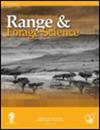评估亚热带南非草原的长期养分和石灰富集效应
IF 1.9
4区 环境科学与生态学
Q3 ECOLOGY
引用次数: 1
摘要
养分富集影响草地生态系统结构,典型表现为物种丰富度降低,生产力提高。量化养分富集对草地的长期影响有助于了解草地的富营养化效应,特别是对适应低土壤养分状况的草地。时间过长,养分的富集可能改变土壤肥力。1951年,南非乌库林加研究农场在天然C4草地上建立了乌库林加草地营养试验。在面积为2.7 × 9 m的地块上,连续施用的处理包括每年0、7、14和21 g m−2的氮肥,每年0和2.8 g m−2的磷,以及每五年施用0和225 g m−2的石灰。氮源包括硫酸铵(酸化)和石灰石硝酸铵(酸化程度较低)。禾草物种组成受两种氮素形态的影响。相比之下,牧草种类组成对LAN更为敏感。我们发现了氮素限制地上净初级产量的证据。然而,由于土壤酸度增加和铝浓度高,物种丰富度(牧草和牧草)随着硫酸铵水平的增加而下降。铝毒性可以通过在现场用耐铝物种取代铝敏感物种来影响整个物种的组成。本文章由计算机程序翻译,如有差异,请以英文原文为准。
Assessing long-term nutrient and lime enrichment effects on a subtropical South African grassland
Nutrient enrichment influences grassland ecosystem structure, typically manifested by reduced species richness and increased productivity. Quantifying the long-term impacts of nutrient enrichment on grasslands contributes to understanding eutrophication effects on grassland, particularly for grasslands adapted to low soil nutrient status. Overextended time periods, nutrient enrichment may modify soil fertility. The Ukulinga Grassland Nutrient Experiment situated on a natural C4 grassland was set up in 1951 on the Ukulinga research farm, South Africa. Continuously applied treatments on plots measuring 2.7 × 9 m include combinations of nitrogen at 0, 7, 14 and 21 g m−2 per annum, phosphorus at 0 and 2.8 g m−2 per annum and lime at 0 and 225 g m−2 applied every five years. Nitrogen sources included ammonium sulphate (acidifying) and limestone ammonium nitrate (less acidifying). Grass species composition was influenced by both nitrogen forms. In contrast, forb species composition was more sensitive to LAN. We found evidence of nitrogen limitation on aboveground net-primary production. However, species richness (for grass and forbs) declined with increasing ammonium sulphate levels, owing to increased soil acidity and high aluminium concentrations. Aluminium toxicity can affect overall species composition by replacing Al-sensitive species with Al-tolerant species on site.
求助全文
通过发布文献求助,成功后即可免费获取论文全文。
去求助
来源期刊

African Journal of Range & Forage Science
ECOLOGY-ENVIRONMENTAL SCIENCES
CiteScore
4.00
自引率
14.30%
发文量
35
审稿时长
>12 weeks
期刊介绍:
The African Journal of Range & Forage Science is the leading rangeland and pastoral journal in Africa. The Journal is dedicated to publishing quality original material that advances rangeland ecology and pasture management. The journal aims to publish research of international importance from any region, but as an African journal, we are particularly interested in research from Africa and relevant to the continent. The Journal promotes both science and its application and authors are encouraged to explicitly identify the practical implications of their work. Peer-reviewed research papers and research notes deal primarily with all aspects of rangeland and pasture ecology and management, including the ecophysiology and biogeochemistry of rangelands and pastures, terrestrial plant–herbivore interactions (both domestic and wild), rangeland assessment and monitoring, effects of climate change on rangelands, rangeland and pasture management, rangeland rehabilitation, ecosystem services in support of production, conservation and biodiversity goals, and the identification and development of intensive and semi-intensive pasture and forage resources to meet livestock production needs. Articles highlighting transdisciplinary linkages among biophysical and social sciences that support management, policy and societal values are particularly encouraged. The Journal includes relevant book reviews and invited perspectives that contribute to the development of range and forage science. Letters to the editor that debate issues raised in the Journal are acceptable. The African Journal of Range & Forage Science is the official journal of the Grassland Society of Southern Africa.
 求助内容:
求助内容: 应助结果提醒方式:
应助结果提醒方式:


